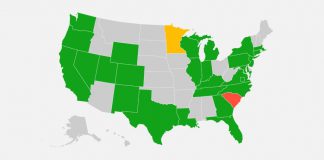MAY 5, 2019

Local, short-distance rides near his home on the Jersey Shore are convenient for him, but they don’t pay well — “You drive all day and you can make $100,” says the father of six.
So to pay the bills, he’ll often drive the 45 miles to Newark Liberty International Airport, where he can shuttle travelers on longer distance, more lucrative trips. He works all night to beat the New Jersey traffic, then heads home at 4 a.m., dropping his children off at school before getting some shuteye.
With Uber preparing for an IPO, the issue of whether gig economy workers like Stephen can earn a living wage is likely to reemerge. For publicly traded companies, the issue of social impact is a growing issue.
Many gig economy workers are part-timers doing freelance work on the side, to supplement paychecks from full-time jobs. There are 15.8-million independent workers who are full-timers, according to The State of Independence in America 2018 report by MBO Partners, which studies the freelance economy.
For those millions of full-time gig workers, getting recognized as a full-fledged employee — at Uber, Lyft and elsewhere — is not coming anytime soon. This week the Department of Labor clarified that these workers are to be classified as independent contractors that are not entitled to health insurance and other benefits that would force companies to follow federal minimum-wage laws. (However, companies still have to abide with local minimum wage requirements.)
Making a living wage
Steve King, an analyst at Emergent Research, which studies independent workers, says Uber and Lyft drivers net $12 to $15 an hour after costs, based on his firm’s calculations. “That is substantially below what you need to earn to have a middle-class job,” says King. The median household income in the U.S. was $63,378, according to Sentier Research, which bases its calculations on U.S. Census Bureau data.
But many ride-share drivers don’t have the skills required for jobs where they could earn more and would otherwise have to take a minimum-wage position somewhere, notes King. For them, gig work offers a benefit they would not have in a lower-skilled, hourly job. “They have more flexibility and freedom driving,” he says.
That said, many gig workers earn far more than ride-share drivers do. “A lot of them are highly skilled and paid that way,” says King.
The Freelancing in America 2018 survey, run by the giant platform Upwork, found that 31% of freelancers earn $75,000 a year or more, up 15 points since 2014. Among respondents who left a traditional job to freelance, 73% said they earn more now freelancing than they did at their prior, traditional job.
Julie Ewald, founder of Impressa Solutions, a marketing firm in Milwaukee, got her start as a solo freelancer on Upwork eight years ago. She made enough to quit several part-time jobs she was juggling and has since expanded her business by bringing on a small army of contractors she found on Upwork. Being very specialized has helped her to command healthy fees, she says, and she does not find she’s an anomaly in the world of freelance workers. “Some of the folks I meet are doing really, really well,” she says.
Jeff Brown, a radio veteran turned podcaster from Nashville, Tennessee, who runs an online event for freelancers called The Boss-Free Virtual Summit, says the best paid freelancers generally aren’t “trading time for money” like Uber and Lyft drivers but instead are creating products or recurring services that tap into their knowledge. “Create something once and sell it hundreds, if not thousands, of times,” he advises. In his own case, he started a paid, subscription-based book club.
The talent chase heats up
But not every freelancer knows how to make the leap from gig worker to solo entrepreneur. Some freelance platforms have taken proactive steps to make sure that freelancers can earn enough to pay their bills by doing traditional gig work.
Upwork, the largest freelance platform, has in recent years focused on attracting enterprise clients who want to hire freelancers on a steady basis, and changing its pricing structure to reward work done on a long-term, recurring basis.
“Enterprises struggle to attract highly specialized talent for rapidly shifting project needs, especially with the current low unemployment rates,” says Stephane Kasriel, CEO of Upwork. “This need to find better ways to get work done is creating more opportunities for freelancers with some of the world’s biggest brands.”
To make sure freelancers in markets with a high cost of living can compete, Upwork has created a site featuring only freelancers based in the U.S. It runs similar sites for freelancers in Australia, Canada and the U.K.
Fivver, whose name is based on small jobs that freelancers will do for $5, now offers Fivver Pro, where professionals who have been vetted by the site can go after higher-paying gigs.
“It’s a balancing act for the platforms,” says Andrew Karpie, research director, service and labor procurement for Azul Partners, which studies procurement and the supply chain. “The platforms’ challenge is to create a marketplace where the two parties benefit.











































































































